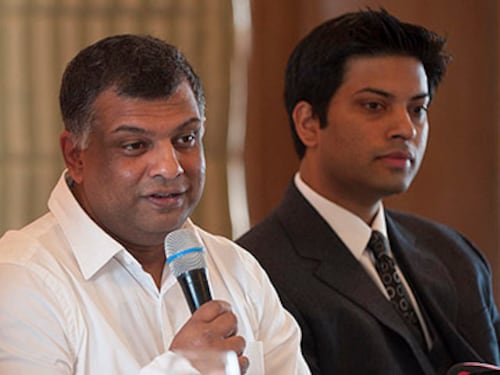Has Tony Fernandes put India on the back-burner?
For AirAsia India to weather the storm it has flown into, the AirAsia boss will need to personally firefight and relive his dream of ushering in 'democracy in air travel'


The recent reports that AirAsia India CEO & MD Mittu Chandilya is quitting the airline brings to light what many aviation analysts have been talking about behind closed doors: that AirAsia boss Tony Fernandes has put India on the back-burner.
Such murmurings have been around for sometime now, despite what Fernandes has been saying that the Indian market is key “to AirAsia's long term growth”.
An individual, who has worked closely with the airline from the outside, believes that if Tony Fernandes had taken a more hands-on approach in the operations, the AirAsia India story would have been a lot different.
To begin with, it was an open secret that Fernandes would be calling the shots in the AirAsia India joint venture, in which AirAsia Berhad of Malaysia has a 49 percent stake. The remaining 51 percent is split among the Indian partners Tata Sons and Telestra Tradeplace.
Despite that, there seems to have been no tangible impact on the operations of AirAsia India. The airline had a market share of just 1.7 percent as off December last year.
“Things would have been much better if Fernandes had come to India, negotiated with various trade partners and also interacted with the regulators and the government. Most of AirAsia India’s problems are to do with regulations,” said a trade analyst, on condition of anonymity.
AirAsia India has been relying on the fact that the Indian government would do away with the 5/20 rule, which allows Indian carriers to fly abroad only after completing five years of domestic operations and having a fleet of 20 aircraft. But that hasn't happened.
“AirAsia came to India not to service the domestic market, but had an eye on the west-bound international traffic from India, which constitutes close to 70 percent of the country’s overall international traffic. They knew that the domestic market was already crowded,” points out another trade analyst.
That said, some analysts believe that Fernandes’ selection of Chandilya to head the airline’s operations in India, wasn’t the best decision. Chandilya had no prior knowledge of running an airline and also didn't have the know-how of doing business in India.
“Running an airline is a complicated business. Every minute there is a flight taking-off from somewhere. It’s not a business where you can learn on the job,” says one of the analysts, who has been quoted earlier.
While Tata Sons have been quiet on AirAsia India’s journey so far, Arun Bhatia of Telstra Tradeplace has been vocal in his criticism in the way the airline has been managed and run.
Given SpiceJet’s ongoing turnaround and IndiGo’s dominant market leadership, for AirAsia India to weather the storm it has flown into, Fernandes would need to personally firefight and relive his earlier stated dream of ushering in democracy in air travel in India.
First Published: Feb 12, 2016, 16:49
Subscribe Now